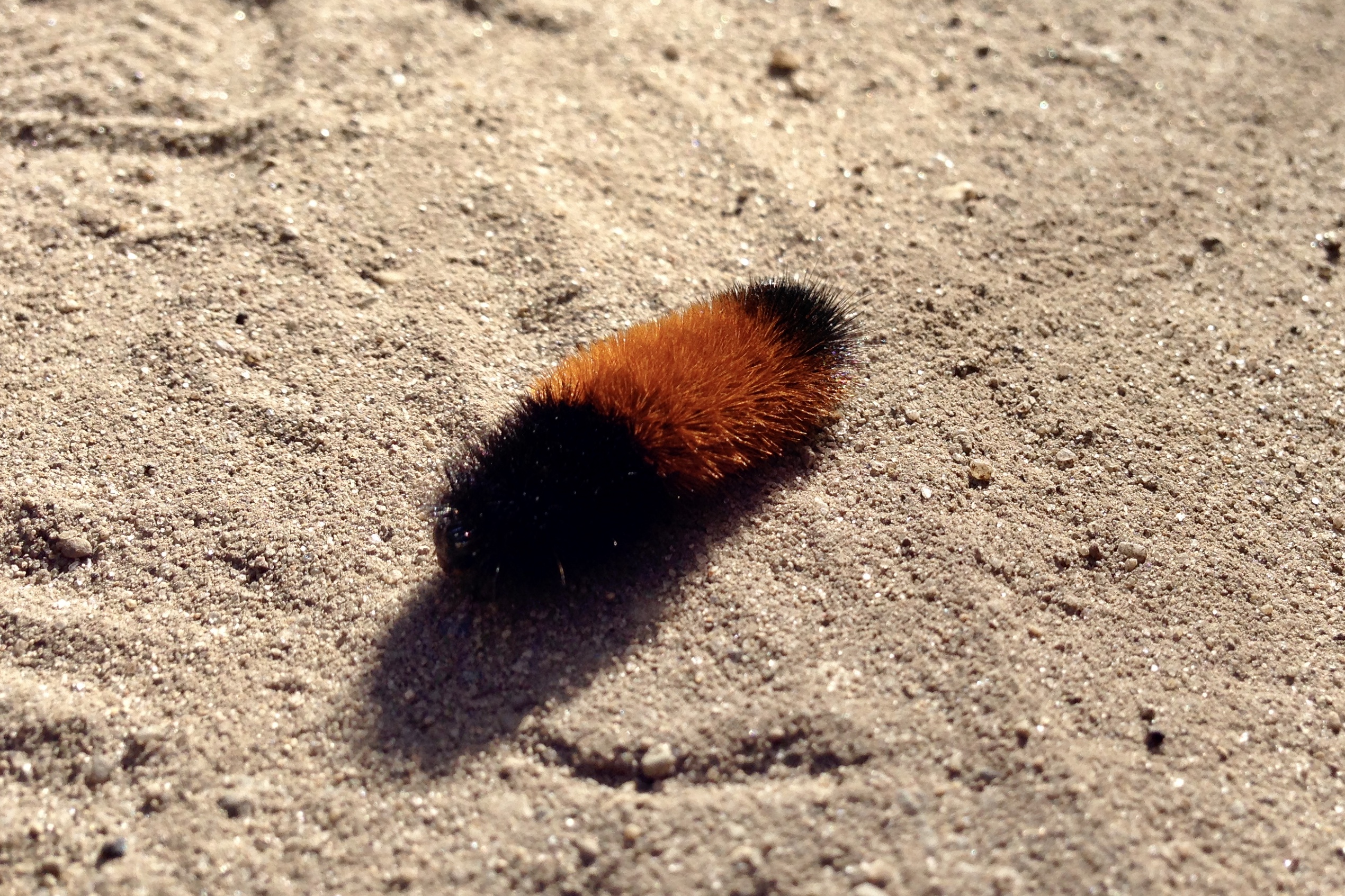

While nothing about these caterpillars can tell us about what kind of winter lies ahead, they do have a unique mechanism that allows them to survive even the coldest, harshest winters. They produce a substance called glycerol, which works in their bodies like an organic antifreeze, according to the University of Nebraska Cooperative Extension. As you might expect, there's no truth to any of these myths. And some people grew up being told that the hairier or woollier these caterpillars appear, the worse the upcoming winter will be. Caterpillars traveling south are said to be trying to escape the cold winter ahead, while seeing caterpillars traveling north means a mild winter may be in store, the weather service reports. Some people believe that the direction the caterpillars are seen traveling in fall also holds clues about the winter ahead. This popular myth isn't the only one about woolly bears. The caterpillars molt six times before they are fully grown, and with each molt their bands change, becoming more brown and less black with age. In addition, the colored bands are an indication of their age. In good growing seasons, woolly bear caterpillars grow larger, which results in a more narrow rusty brown band and longer black bands, according to the weather service.

Instead, the variation in the color of the caterpillar's bands has to do with its particular species as well as its age and feeding habits, the weather service reports. There are many different species of these insects, and the colorings and markings in both the larval and adult phases vary among species. Fall is the time of year when we start seeing woolly bears, because they are leaving areas where their food plants are to find dark, sheltered places where they can hibernate for the winter. However, nothing about their physical appearance has anything to do with winter weather. If you see one with a wide brown middle band and small black bands at the end, it's supposedly a sign we will have a mild winter.Īs you might expect, though, this less-than-scientific method of winter weather forecasting has been busted, according to the National Weather Service. According to folklore, the longer the caterpillar's black bands are, the worse winter will be - longer, colder, snowier, the whole shebang. As legend has it, you can tell how bad of a winter you are in for just by looking at a woolly bear caterpillar.


 0 kommentar(er)
0 kommentar(er)
